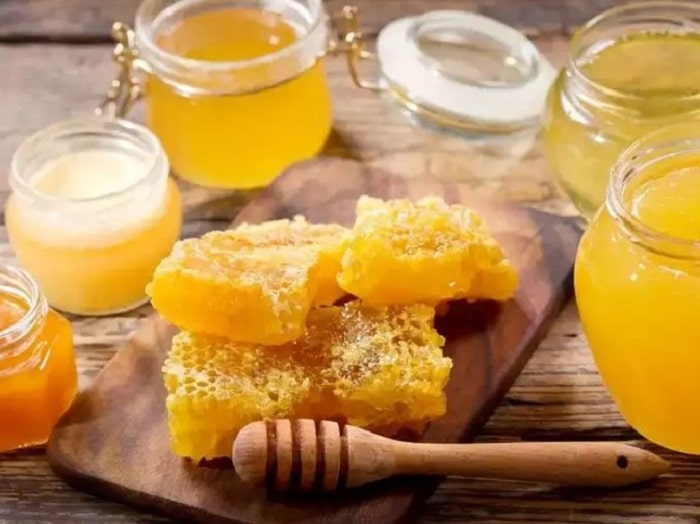Honey storage is an essential component of beekeeping. Both beekeepers and honey consumers should understand how to store honey without compromising its quality. One method for keeping honey that is available is freezing it. So, can you freeze honey?
Can you freeze honey?
Yes, honey can be stored in the freezer. Although it may get incredibly thick and even appear “glassy,” raw, unadulterated honey will almost certainly never completely freeze. This is due to the fact that the majority of consumer freezers do not become cold enough. However, freezing honey will help it preserve its nutritional qualities and antibacterial characteristics while not affecting its quality or flavor.
Stored honey rarely spoils, and as long as the moisture content is correct, it will not ferment. Cool temperatures are ideal for honey storage. It crystallizes and thickens. It is also possible for it to become finely granulated. The honey tastes delicious and retains its nutrition. Honey crystallization is not always a bad thing. While crystallized honey is more difficult to work with, it retains all of its beneficial characteristics.
What is honey’s freezing point?
As the temperature drops, viscous liquids like honey become slow and exceedingly thick. At -200 degrees Celsius, honey seems solid but continues to flow at a very slow rate. It exhibits a glass transition temperature range of -420 C to -510 C. Honey transforms into a glassy amorphous solid that is non-crystalline at lower temperatures.
The majority of freezers are accessible to beekeepers and other honey users maintain temperatures ranging from -40 C to -200 C. Some may even reach -300 degrees Celsius. These temperatures are insufficient to totally freeze honey to a glass-like form. They are, however, sufficient to keep honey fresh for extended periods of time.

>>> Read more: Review of the VIVO BEE-V002 Large 2 Frame Honey Extractor
How to freeze honey?
To keep honey in good condition, keep it frozen at a steady temperature. Temperature swings might affect the quality of your honey. It is advisable to keep your honey in a freezer that is not frequently opened. If you only have one freezer, keep it in the coldest area of the freezer, away from the doors and front.
Few pieces of equipment
- Airtight, freezer-safe glass or BPA-free plastic container
- Zipper top freezer-safe bags (only if you are using a plastic container)
- Black Sharpie
- Freezer labels
- Warm, wet cloth or paper towel
- Dry cloth or paper towel
Step by step
- Fill an airtight, freezer-safe glass container halfway with honey.
- Allow at least one empty space in your container so that as your honey expands, it does not break the glass.
- Wipe away any honey that has accumulated around the rim or on the exterior of the jar with a warm cloth. Make certain that no honey is spilled on the container, particularly the rim.
- Dry the container and rim completely. Then, ensure sure the cover is tightly screwed on.
- Place the honey in the coldest section of the freezer, either in the bottom of a chest freezer or at the back of an upright freezer, away from the door.
If you do not have any glass containers or prefer not to use them, you can substitute freezer-safe plastic containers. However, before putting your freezer-safe plastic container into the freezer, place it inside a freezer-safe zip-top plastic bag. This will help to ensure that no scents get into your honey.
Is it true that freezing honey destroys nutrients?
The nutrients in honey are not destroyed when it is frozen. Honey should be frozen in a freezer that maintains a steady temperature. Although honey does not lose nutrition when frozen, it may lose other qualities due to poor freezing. Use glass containers while freezing honey.
Frozen honey should be thawed before using. The honey gets less viscous and easier to pour as it warms. It also becomes easier to disseminate. Warming frozen honey is best accomplished by immersing the jar in warm water. If you re-freeze warmed honey, the nutrients and flavor will be lost.
Can you freeze honeycomb?
For a variety of reasons, beekeepers freeze honey in honeycomb. Honey in unprocessed frames might be removed later or sold in honeycomb form. The comb can be removed from the beehive frame or kept on it during freezing. Before freezing the honey, do not remove the honeycomb top. If you remove the cover, the honey will trickle out before it freezes entirely.
Beekeepers freeze honey in honeycomb for two main reasons. The first and most obvious purpose is to preserve the environment. The beekeeper may wait till the complete harvest is in before extracting honey. The second reason beekeepers freeze honey in honeycomb is to keep wax moths away from the honeycomb. Wax moth larvae and eggs on honeycomb are killed by freezing.
How to freeze honey in honeycomb?
- Set your freezer temperature to the temperature you want your honeycomb and frames to be stored at.
- Wrap the frames or honeycomb with plastic sheeting or place it in a plastic bag.
- Place the frames and comb in the freezer.
Take precautions to prevent condensation from accumulating on frozen honeycombs containing honey. This occurs when the frames are removed from the freezer. The honeycomb becomes drenched. If the honeycomb is still attached to the frame when it is stored, the frame becomes damp and may mold later.

>>> Read more: How much oxalic acid per hive?
FAQ
Q1: Is honey contaminated?
If your honey has been correctly stored, there is a very little risk that it may ferment.
Q2: Is crystallized honey bad?
Honey crystallizes naturally over time. And, no, crystallized honey is not a negative thing. In reality, it is completely safe to consume. You can return the honey to its liquid state by running hot water over it or placing it in a dish of hot water.
Q3: What is dry honey?
The term “dry honey” refers to honey that has been dehydrated. It is also known as honey powder, honey crystals, or dried honey. Each of these forms of “dry honey” has unique qualities and can be treated in a variety of ways.
Conclusion
When it comes to long-term storage of honey, freezing it is ideal but not sustainable. Honey can be kept fresh for as long as you like by sealing it in an airtight container and storing it at room temperature. Honey’s extremely low moisture content aids in the prevention of germ growth. As a result, it will not ferment or spoil.
